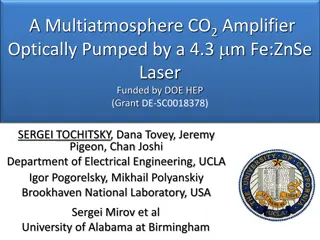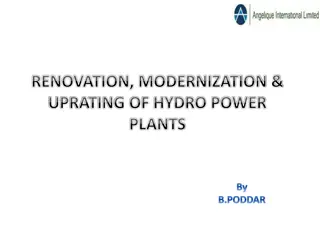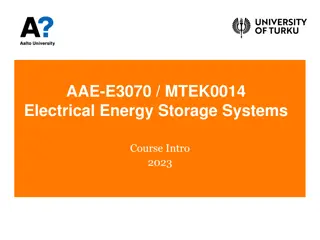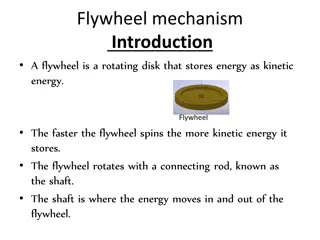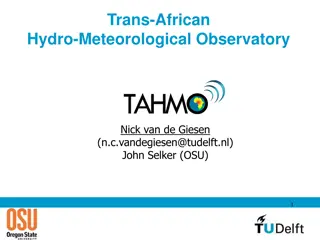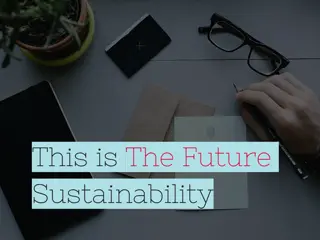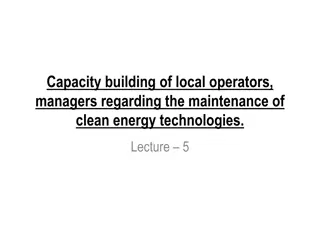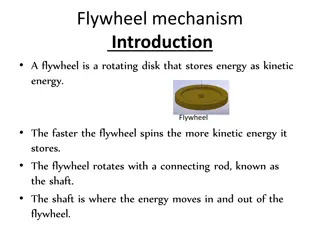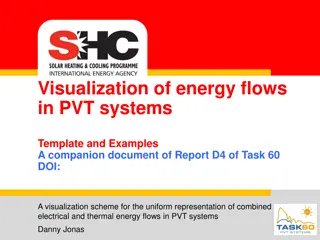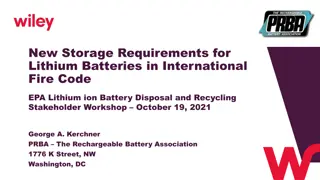Exploring Pumped Hydro Energy Storage Technologies
Pumped hydro energy storage systems utilize gravitational potential energy of water to store and generate electricity. They are efficient and versatile, with various types such as electro-chemical, thermal, and lithium-ion battery storage. Applications include energy balancing, load leveling, and emergency reserves. Additionally, the potential of pumped hydro energy storage is vast worldwide, especially in countries like China, Japan, and the US, with innovative projects like offshore storage on the horizon.
Download Presentation

Please find below an Image/Link to download the presentation.
The content on the website is provided AS IS for your information and personal use only. It may not be sold, licensed, or shared on other websites without obtaining consent from the author. Download presentation by click this link. If you encounter any issues during the download, it is possible that the publisher has removed the file from their server.
E N D
Presentation Transcript
ELEC-E8423 - Smart Grid Pumped Hydro Energy Storages Juuso Kortelainen & Rasmus Hietanen
Introduction Pumped hydro energy storages store energy in the form of gravitational potential energy of water Energy efficiency 70-80 % Technology Pumped Hydro Storage Electro-chemical Thermal Storage Electro-mechanical Lithium Ion Battery Hydrogen Storage Compressed Air Energy Storage Liquid Air Energy Storage Lead-Carbon Rated Power (GW) Share of storages About 180 GW of 181,80 3,28 3,28 2,60 0,75 0,02 0,01 0,01 0,00 94,81 % 1,71 % 1,71 % 1,36 % 0,39 % 0,01 % 0,00 % 0,00 % 0,00 % announced and operational facilities About 95 % of all storages are pumped hydro energy Department of Energy (2020) storages Page 2
How it works? Page 3
Applications Energy balancing Storages can be used when the renewable production is low Load leveling Storages can be loaded in night hours to balance the load peaks Large emergency reserve Page 4
Potential of pumped hydro energy storage Worldwide: China, Japan and US are the largest producers Conventional projects are limited mostly to mountainous regions In Finland: Elevation differences are usually just tens of meters in the hydropower plants An underground pump plant and energy storage test facility is planned to be built at the Pyh salmi mine The deepest mine in Europe Could produce 70 MW Offshore storages could be a possibility Department of Energy (2020) Page 5
Different types of pumped energy storage Pumped storage plant on surface The most common in use Requires high elevation difference Underground reservoirs One or more reservoirs underground Can be used in old mines Usable in flat regions Underwater reservoirs Usage of pressure at the sea bottom When power is needed, water is let in When there is electricity surplus, water is pumped out Page 6
Offshore pumped storage In many industrialized countries, the potential of regular pumped hydro storages has been largely exhausted Storing energy at sea Parameters: Water depth 600-800m Slope <= 1 degree Distance to the electrical grid <= 100km Distance to installation and maintenance bases <= 500km Benefits: No need for landuse. Handicaps: High fabrication costs and presence of harsh maritime
+ Advantages Helps integrate renewables into power system Easy energy balancing Reliable and simple technology Long lifetime - Disadvantages High investment costs Only possible in specific locations PHS on surface: Large use of land Environmental and social issues Page 8
Conclusions Pumped hydro energy storage accounts for 95 percent of installed global energy storage capacity New technology brings great potential for new installations especially in non-mountainous regions Helps integrate renewables into the energy system with load- shifting and balancing inflexible sources of power generation Page 9
Source material used Arena Wire. (2017). What is pumped hydro and how does it work?. [online] Available at: https://arena.gov.au/blog/what-is-pumped-hydro-and-how- does-it-work/ [Accessed 11.4.2021]. Department of Energy: Office of Electricity. (2020). Global Energy Storage Database. [online] Available at: https://www.sandia.gov/ess-ssl/global- energy-storage-database-home/ [Accessed 11.4.2021]. Dubbers, D. (2021). Comparison of underwater with conventional pumped hydro-energy storage systems. Journal of Energy Storage, 35. https://doi.org/10.1016/j.est.2021.102283 Hunt, J.D., Byers, E., Wada, Y. et al. (2020). Global resource potential of seasonal pumped hydropower storage for energy and water storage. Nat Commun, 11, 947. https://doi.org/10.1038/s41467-020-14555-y Kougias, I., Aggidis, G., Avellan, F. et al (2019). Analysis of emerging technologies in the hydropower sector. Renewable and Sustainable Energy Reviews, 113. https://doi.org/10.1016/j.rser.2019.109257 Muelaner, J. (2019). New experimental energy storage system may be the key to a zero-carbon future. [online]. Available: https://www.engineering.com/story/harnessing-seabed-pressure-to-store-renewable-energy [Accessed 11.4.2021]. Puchta, M., et al. (2017) Development and testing of a novel offshore pumped storage concept for storing energy at sea. Elsevier Ltd. DOI: 10.1016/j.est.2017.06.004 Rahman, M., Olufemi Oni, A., Gemechu, E. & Kumar, A. (2020). Assessment of energy storage technologies: A review. Energy Conversion and Management. 223. https://doi.org/10.1016/j.enconman.2020.113295. Sabihuddin, S., Kiprakis, A. & Mueller, M. (2015). A Numerical and Graphical Review of Energy Storage Technologies. Energies. Volume 8. 172-216. DOI: 10.3390/en8010172. Slocum, A.H., et al. Ocean renewable energy storage (ORES) system: Analysis of an undersea energy storage concept. (2013). Institute of Electrical and Electronics Engineers Inc. DOI: 10.1109/JPROC.2013.2242411 Yle Uutiset. (2019). Pyh salmen kaivokseen rakennetaan pumppuvoimalan ja energiavaraston testilaitos. [online] Available at: https://yle.fi/uutiset/3- 11099952 [Accessed 11.4.2021]. Page 10





